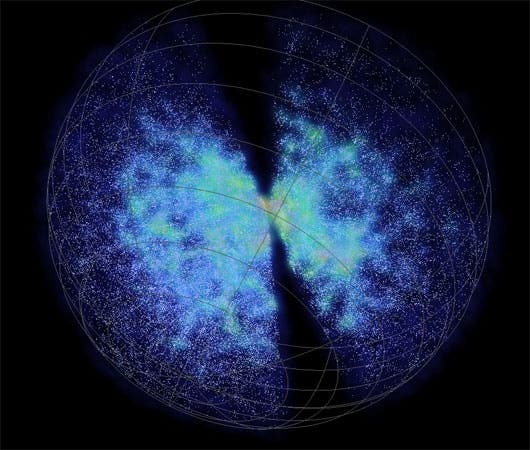The Universe is in constant expansion, which is why it is commonly said to be infinite, so basically one can measure all he wants and still won’t find out how big the Universe is. An accurate measurement of this rate of expansion, however, is critical for space observations, and a young Australian student has recently found a better way of computing it.
Florian Beutler, a PhD candidate with the International Centre for Radio Astronomy Research (ICRAR) at the University of Western Australia, managed to do this by using the infamous Hubble constant refined using space survey data.
“The Hubble constant is a key number in astronomy because it’s used to calculate the size and age of the universe,” says Beutler.
This constant is used like a sort of correction fact for estimating the ever-changing distances between farther galaxies and the Earth. Until now, scientists would approximate the speed and direction of a given galaxy by studying its brigthness, infrared spectrum and so on. This method however is extremely error-prone. An great read providing insight on the subject can be found in this Harvard article.
Harnessing data from a survey of more than 125,000 galaxies carried out with the UK Schmidt Telescope in eastern Australia, Beutler has been able to come up with a different computing method. Called the 6dF Galaxy Survey, it is the biggest survey to date of relatively nearby galaxies, covering almost half the sky.
“This way of determining the Hubble constant is as direct and precise as other methods, and provides an independent verification of them,” said Professor Matthew Colless, director of the Australian Astronomical Observatory and one of Mr Beutler’s co-authors.
“The new measurement agrees well with previous ones, and provides a strong check on previous work,” he said.
Beutler says he’s now been able to measure the Hubble constant with an uncertainty of less than five percent and for you astronomy buffs reading this, he figure he’s reached is is 67.0 ± 3.2 km s-1 Mpc-1. It is said the this measurement can be refined even further when data from other surveys is employed.










